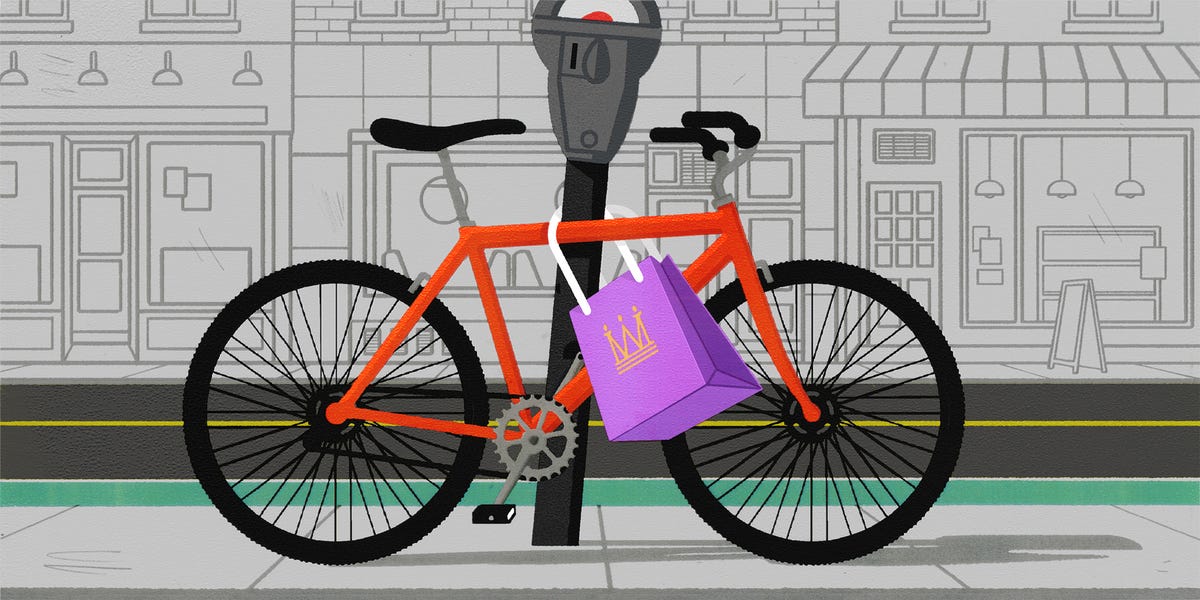It kind of makes sense that most store owners would drive a car. But it’s sad that they don’t understand how much foot and bike traffic they get.
When cities are no longer built for foot/bike traffic and businesses instead choose locations based on the amount of stop signs or red lights which can view the storefront, this is an inevitable result.
Does this really work? I don’t care about the stores while at the red light, I just watch the light to go green.
IDK how much it works. Although I’m sure there has been extensive research done on the topic by large retailers who include criteria like this in their checklist for a new store so I would assume it works. These storefronts are most of the time also large anchor stores on the corners of shopping centers. So perhaps it is just a coincidence that there are a lot of stopped vehicles in line of sight of a sign.
I wouldn’t need to park in front of so many places if there were bike lanes around my apartment so I could just ride my bike two or 3 blocks instead of driving. If I’m going to drive, I might as well go further away to justify using the gas.
I got an insulated backpack like food delivery people use. With that I’m able to walk anyplace within walking distance. Which for me would be a 30 min walk. But it definitely takes more time than if I were to bike
This is 100% the case for me. I’ll seek out businesses along bike routes, but more importantly, have bike parking.
Conversely, I’ll avoid ones that make it difficult to access by bike.
I’ll even go out of my way to pick one place over another solely based on bike access and bike parking.
In my city there are a lot of bicycle lanes but practically no bike racks near any businesses - and the lanes themselves avoid the main commercial streets and wind through residential neighborhoods instead.
It’s painfully obvious the bicycle infrastructure is designed for rich yuppies exercising and not commuting or shopping. Because fuck the poors.
Watched a NotJustBikes video about how poor people are actually subsidizing rich neighborhoods because of how inefficient and under taxed the houses are. Suburbs actually lose North American cities tons of money, but no one wants to make walkable cities since cars own everything now.
I don’t think that’s 100% true. I know they’re building a walkable, car fee suburb in Phoenix/mesa. And at least in my area (Southern Hamilton county Indiana) they’re building more and more multi use pathways for cyclists and pedestrians along the major roads to businesses and schools.
You should totally pull up Google maps and select cycling routes in that area (near Carmel) and tell me what you think. It’s not just scenic trails through neighborhoods, but actually useful routes to places you want to shop or hang out.
This is the best summary I could come up with:
In a study of the effects of street improvements on a shopping corridor in Los Angeles published in 2012, more than half of the store owners on the bike-laned part of the boulevard thought most of their customers drove.
“It would be logical to assume that more bicyclists were coming to the NBD because of the new facility,” he writes, “but no conclusion can be made to connect mode choice to economic performance.” Still, there’s no mistaking the data: Adding bike lanes certainly didn’t hurt sales — and may have boosted them dramatically.
In 2018, Joseph Poirier, the urban planner I quoted earlier, looked at sales data from three retail neighborhoods in San Francisco with newly installed bike lanes.
On Class II lanes, bars and barber shops and banks enjoyed increases in sales, while furniture stores and gas stations were more likely to experience decreases.
Back in the 1960s, when the advent of suburban flight and climate-controlled malls began to draw business away from America’s once thriving downtowns, cities tried to stanch the flow by banning cars on shopping streets.
“Newer businesses who are thrilled with density and development around them are pivoting to a customer who’s younger, who’s arriving on a scooter or a bike,” says Larisa Ortiz, a managing director at the urban-planning consultancy Streetsense.
The original article contains 2,039 words, the summary contains 217 words. Saved 89%. I’m a bot and I’m open source!
in the US







